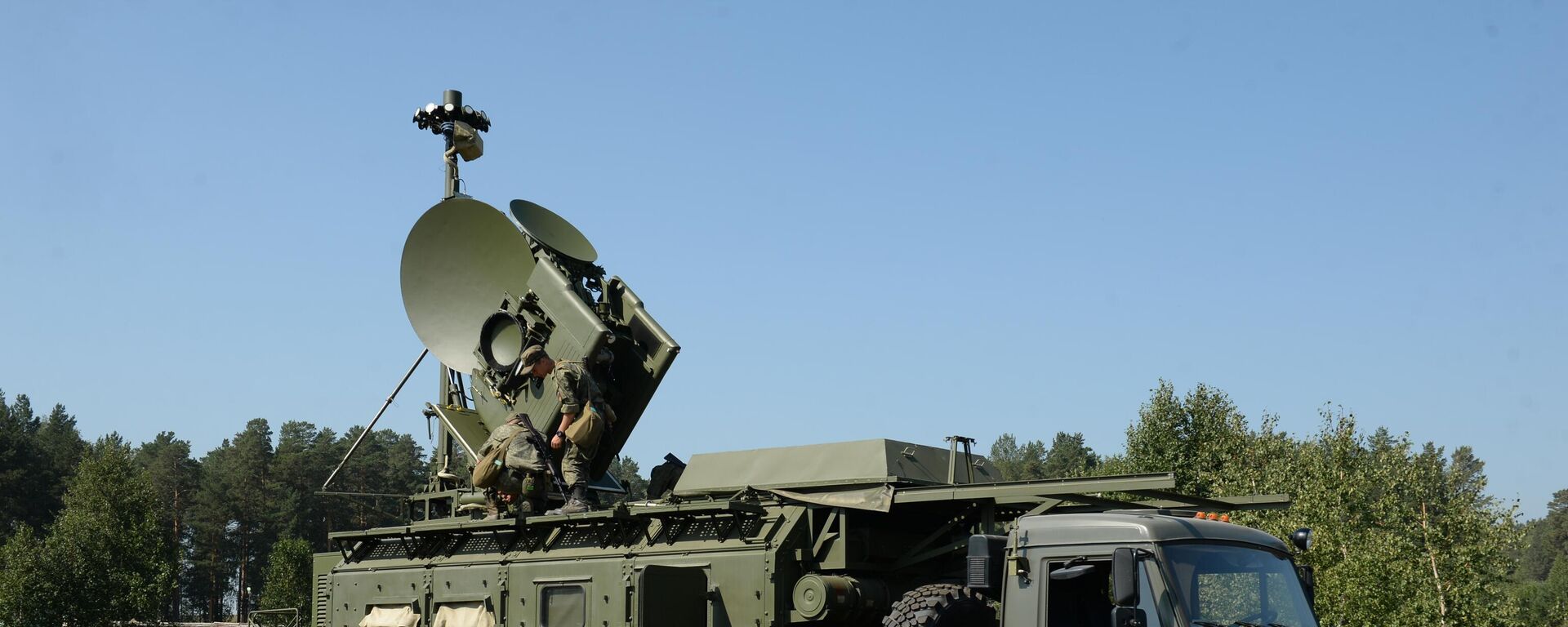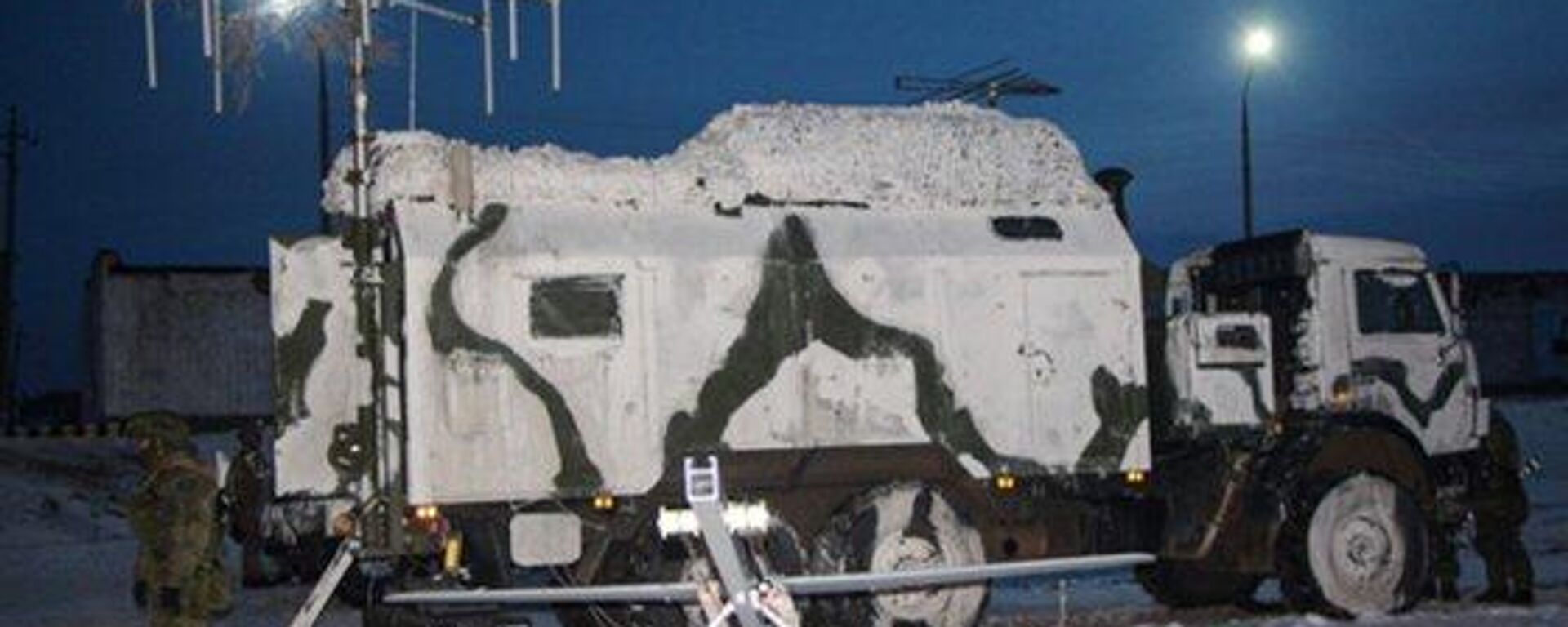https://sputnikglobe.com/20240415/second-to-none-how-russia-masters-its-electronic-warfare-1117947049.html
Second to None: How Russia Masters Its Electronic Warfare
Second to None: How Russia Masters Its Electronic Warfare
Sputnik International
The Russian armed forces mark Electronic Warfare (EW) Specialist Day on April 15. How have Russia's EW systems been improved since the beginning of the special military operation in Ukraine?
2024-04-15T19:12+0000
2024-04-15T19:12+0000
2024-04-16T04:33+0000
russia
military & intelligence
bashar al-assad
ukraine
syria
nato
russia
us
europe
krasukha-4
https://cdn1.img.sputnikglobe.com/img/07e7/09/10/1113415441_0:0:3077:1731_1920x0_80_0_0_fd283017ffaa1833769cd2b3a00607a1.jpg
Exactly 200 years ago, on April 15, 1904, signalmen from the Russian battleship Pobeda and the naval telegraph station in the Zolotaya Gora settlement successfully jammed enemy radio communications to disrupt the shelling of the the Port Arthur fortress by Japanese armored cruisers during the Russo-Japanese War of 1904-1905.That was the first time that Russia resorted to electronic warfare techniques.Today, EW has turned into one of the most important forms of support for modern combat operations, which includes the targeted impact of electromagnetic radiation on electronic targets in enemy control systems.Russia Tested Modern EW Systems During Syrian WarIn the 21st century, the West first faced Russia's sophisticated EW systems during Moscow's air force operation in Syria, launched in 2015 in response to the official request from the President of the Syrian Arab Republic Bashar al-Assad.The performance of Russia's EW was impressive: commenting on Russian forces’ actions in Syria, General Raymond A. Thomas lll called them "the most aggressive electronic warfare on the planet."Russia's Special Military Operation in UkraineThe special military operation in Ukraine has catalyzed the modernization of Russia's EW capabilities, according to Alexei Leonkov, veteran Russian military observer and defense tech expert."For the first time we faced various types of NATO weapons, including electronic reconnaissance means. The enemy was seeking to inflict damage to our forces by using FPV drones and other unmanned aerial vehicles (UAVs)," he added. "It turned out that electronic warfare systems paired with anti-aircraft missile systems could very effectively combat this type of weapons."The military expert pointed out that Russia's successes in electronic warfare were soon acknowledged by the West. In July 2023, the Economist reported that Russia's electronic jamming was knocking Ukrainian drones and NATO-supplied GPS-guided projectiles out of the sky. The magazine referred to last spring's Pentagon leak, which revealed that US-made JDAM-ER bombs as well as precision-guided rockets fired by American HIMARS supplied to Ukraine had repeatedly missed their targets in the conflict zone.Leonkov singled out the Krasukha-S4, the Russian self-propelled electronic warfare (EW) system that rendered NATO-made missiles, drones and radars ineffective. The Krasukha is capable of jamming radio signals in a wide range of frequencies out to a range of over 300 km.Making Drones Drop Like FliesDuring the special military operation Russia doubled down on using "individual" EW equipment for Russian military units, armored vehicles, combat aircraft and other weapons, according to Leonkov."These complexes began to work directly in the combat zone and their modifications or brand new products were created during a special military operation," he noted. "There is 'Polye 21', which targets drones, interrupting communication. The system has undergone improvements, because even though Polye-21 coped with its tasks, the enemy was not sitting on its hands, either."These "individual" systems have proven especially effective against cheap kamikaze FPV drones massively used by the Ukrainian military.Anti-Satellite SystemsLast year it was reported that Russia had started to deploy electronic warfare systems capable of jamming spacecraft in geostationary orbit. This came in handy given Ukraine's massive use of Western commercial satellites for military needs.There is little information about the Tirada-2S in the public domain. The Russian Ministry of Defense describes it as a radio-electronic communication suppression system capable of electronically jamming satellite communications until it disables them. The ministry explained that the system detects satellite communication channels, which ensure combat control and data transmission, and interfere with them to prevent the signal from passing through.Russians Integrating Kinetic and Electronic Warfare"The Russian army has begun to integrate the kinetic warfare with its electronic warfare, and it realizes the flexibility in being able to do this," Stupples said, adding that Russia maintains special EW regiments which are well-trained and well-equipped.Russia has also mastered the art of detecting and thwarting both Ukrainian and NATO-made EW systems, according to Leonkov. Russia's electronic warfare complex, which includes electronic reconnaissance, not only detects enemy EW devices, but can also determine their coordinates, he noted.
https://sputnikglobe.com/20230524/advanced-russian-ew-systems-reportedly-take-out-10000-ukrainian-drones-per-month--1110553449.html
https://sputnikglobe.com/20240105/russian-electronic-warfare-troops-detect-over-2-mln-airborne-targets-in-2023-1115989760.html
https://sputnikglobe.com/20231006/scoop-russia-fine-tuning-electronic-warfare-systems-to-suppress-ukraines-f-16s-1113991192.html
https://sputnikglobe.com/20231120/nato-smart-artillery-swatting-prodigy-meet-russias-polye-21-radio-electronic-warfare-complex-1115072594.html
https://sputnikglobe.com/20240215/what-are-russias-top-5-anti-satellite-systems-1116802215.html
https://sputnikglobe.com/20230702/watch-russian-lancet-kamikaze-drone-destroy-ukrainian-tank-and-electronic-warfare-station-1111619203.html
russia
ukraine
syria
Sputnik International
feedback@sputniknews.com
+74956456601
MIA „Rosiya Segodnya“
2024
News
en_EN
Sputnik International
feedback@sputniknews.com
+74956456601
MIA „Rosiya Segodnya“
Sputnik International
feedback@sputniknews.com
+74956456601
MIA „Rosiya Segodnya“
russia's electronic warfare, russian electronic warfare systems, russia used ew in syria, russia uses ew systems in ukraine, krasukha-4, tirada 2s, electronic jamming, russia renders ukrainian drones and missiles ineffective, russian special military operation in ukraine, russian anti-satellite weapons
russia's electronic warfare, russian electronic warfare systems, russia used ew in syria, russia uses ew systems in ukraine, krasukha-4, tirada 2s, electronic jamming, russia renders ukrainian drones and missiles ineffective, russian special military operation in ukraine, russian anti-satellite weapons
Second to None: How Russia Masters Its Electronic Warfare
19:12 GMT 15.04.2024 (Updated: 04:33 GMT 16.04.2024) The Russian armed forces mark Electronic Warfare (EW) Specialist Day on April 15. How have Russia's EW systems been improved since the beginning of the special military operation in Ukraine?
Exactly 200 years ago, on April 15, 1904, signalmen from the Russian battleship Pobeda and the naval telegraph station in the Zolotaya Gora settlement successfully jammed enemy radio communications to disrupt the shelling of the the Port Arthur fortress by Japanese armored cruisers during the Russo-Japanese War of 1904-1905.
That was the first time that Russia resorted to electronic warfare techniques.
Today, EW has turned into one of the most important forms of support for modern combat operations, which includes the targeted impact of electromagnetic radiation on electronic targets in enemy control systems.
Russia Tested Modern EW Systems During Syrian War
In the 21st century, the West first faced Russia's sophisticated EW systems during Moscow's air force operation in Syria, launched in 2015 in response to the official request from the President of the Syrian Arab Republic Bashar al-Assad.
"In 2007, Russia invested heavily in research and development and the procurement of electronic warfare equipment," David Stupples, professor of electronic and radio engineering at the School of Science and Technology of City, University of London, told Sputnik. "[By the time of the Syrian war] the Russian Armed Forces had been re-equipped with modern electronic warfare [systems]."
The performance of Russia's EW was impressive: commenting on Russian forces’ actions in Syria, General Raymond A. Thomas lll called them "the most aggressive electronic warfare on the planet."
Russia's Special Military Operation in Ukraine
The special military operation in Ukraine has catalyzed the modernization of Russia's EW capabilities, according to Alexei Leonkov, veteran Russian military observer and defense tech expert.
"Before the start of the special military operation, we already had advanced electronic warfare and electronic suppression systems," Leonkov told Sputnik. "They have been further improved during the special military operation."
"For the first time we faced various types of NATO weapons, including electronic reconnaissance means. The enemy was seeking to inflict damage to our forces by using FPV drones and other unmanned aerial vehicles (UAVs)," he added. "It turned out that electronic warfare systems paired with anti-aircraft missile systems could very effectively combat this type of weapons."
The military expert pointed out that Russia's successes in electronic warfare were soon acknowledged by the West.
In July 2023, the Economist reported that Russia's
electronic jamming was knocking Ukrainian drones and NATO-supplied GPS-guided projectiles out of the sky. The magazine referred to last spring's Pentagon leak, which revealed that US-made JDAM-ER bombs as well as precision-guided rockets fired by American HIMARS supplied to Ukraine had repeatedly missed their targets in the conflict zone.
Leonkov singled out
the Krasukha-S4, the Russian self-propelled electronic warfare (EW) system that rendered NATO-made missiles, drones and radars ineffective. The Krasukha is capable of jamming radio signals in a wide range of frequencies out to a range of over 300 km.
"There are a lot of systems that are being fully used at the moment," echoed Stupples. "These are the Krasukha-4 system and the Krasukha-2 system. The Krasukha-4 is targeting X-band and QU-band. So this is really looking at surveillance aircraft or surveillance capability. It's also looking at satellites, etc. The Krasukha-4 is a very sophisticated and probably one of the most advanced jamming systems or EW systems in the world. We still hold that in high regard."

6 October 2023, 18:59 GMT
Making Drones Drop Like Flies
During the special military operation Russia doubled down on using "individual" EW equipment for Russian military units, armored vehicles, combat aircraft and other weapons, according to Leonkov.
"These complexes began to work directly in the combat zone and their modifications or brand new products were created during a special military operation," he noted. "There is
'Polye 21', which targets drones, interrupting communication. The system has undergone improvements, because even though Polye-21 coped with its tasks, the enemy was not sitting on its hands, either."
These "individual" systems have proven especially effective against cheap kamikaze FPV drones massively used by the Ukrainian military.
"It was particularly important to be able to interrupt the signal between the operator and the drone that could work on multiple frequencies, because the enemy has recently begun to use multi-band drones," said Leonkov. "That is, when we jammed one frequency, it automatically switched to another, and so on."

20 November 2023, 12:08 GMT
Last year it was reported that Russia had started to deploy electronic warfare systems capable of jamming spacecraft in geostationary orbit. This came in handy given Ukraine's massive use of Western commercial satellites for military needs.
"During the special military operation, we saw that the enemy was using civilian satellite constellations for military purposes. In order to prevent their effective operation, [Tirada 2S] systems were used, which successfully completed the tasks," he said.
There is little information about
the Tirada-2S in the public domain. The Russian Ministry of Defense describes it as a radio-electronic communication suppression system capable of electronically jamming satellite communications until it disables them. The ministry explained that the system detects satellite communication channels, which ensure combat control and data transmission, and interfere with them to prevent the signal from passing through.
Russians Integrating Kinetic and Electronic Warfare
"The Russian army has begun to integrate the kinetic warfare with its electronic warfare, and it realizes the flexibility in being able to do this," Stupples said, adding that Russia maintains special EW regiments which are well-trained and well-equipped.
"Because they're using it in conflict, they're learning all the time. This isn't like just having a regiment sitting somewhere in Russia going through training every day," the British expert said. "In the West… we haven't had the sheer amount of infrastructure and modern equipment that the Russian forces have had. So, I believe that from there, Russia is catching up faster."
Russia has also mastered the art of detecting and thwarting both Ukrainian and NATO-made EW systems, according to Leonkov. Russia's electronic warfare complex, which includes electronic reconnaissance, not only detects enemy EW devices, but can also determine their coordinates, he noted.
"The enemy has presently lost many advantages provided by electronic warfare equipment supplied by NATO and developed in Ukraine," Leonkov said. "But our work is not finished yet. Our complexes are being continuously improved. Despite [Russia] creating cutting-edge systems, the enemy is still looking for an opportunity to overcome them. However, as the conflict continues it's getting harder for the enemy to catch up."










